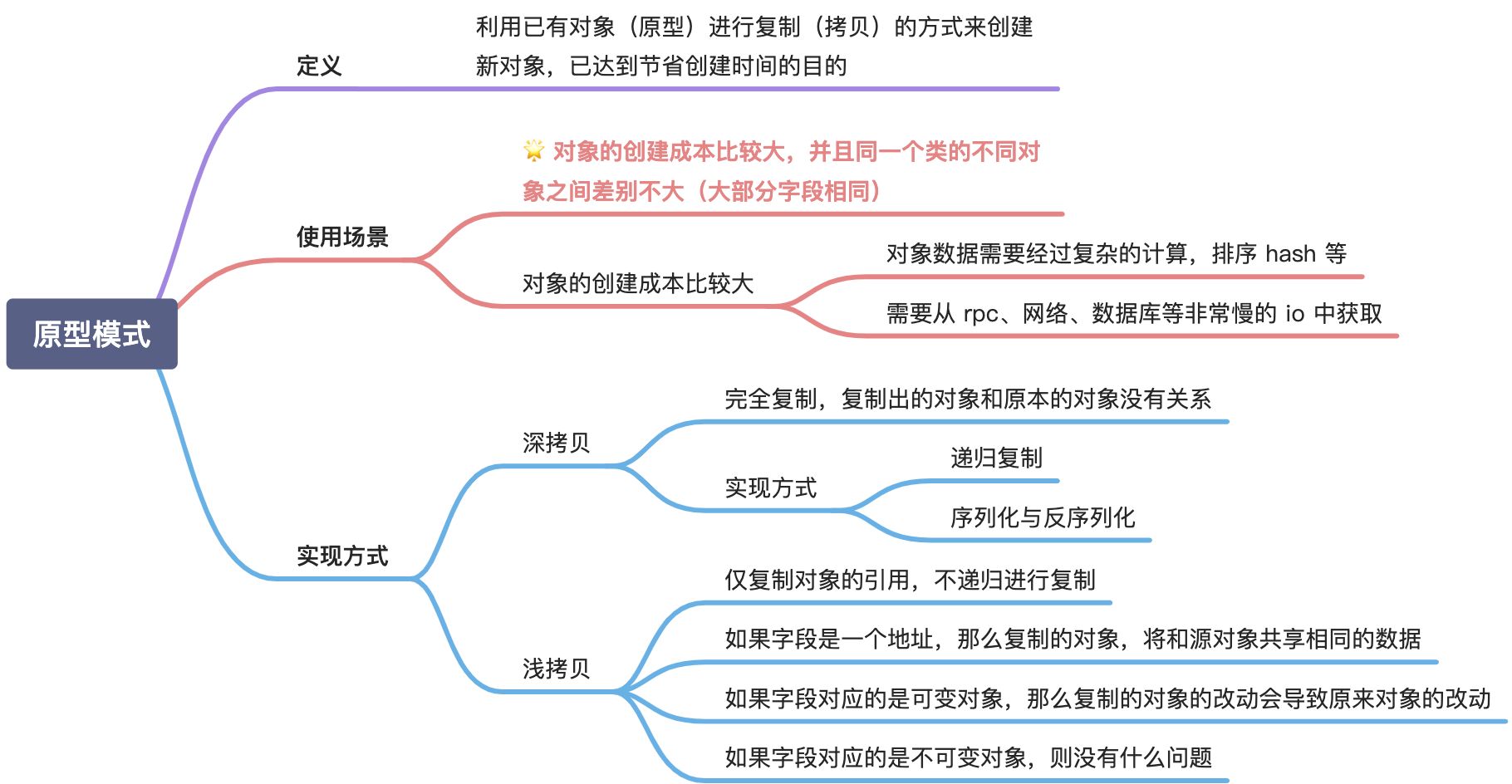Go设计模式—原型模式
Posted 张志翔ۤ
tags:
篇首语:本文由小常识网(cha138.com)小编为大家整理,主要介绍了Go设计模式—原型模式相关的知识,希望对你有一定的参考价值。
- 这个模式在 Java、C++ 这种面向对象的语言不太常用,但是如果大家使用过 javascript 的话就会非常熟悉了,因为 js 本身是基于原型的面向对象语言,所以原型模式在 js 中应用非常广泛。
- 接下来会按照一个类似课程中的例子使用深拷贝和浅拷贝结合的方式进行实现
- 需求: 假设现在数据库中有大量数据,包含了关键词,关键词被搜索的次数等信息,模块 A 为了业务需要
- 会在启动时加载这部分数据到内存中
- 并且需要定时更新里面的数据
- 同时展示给用户的数据每次必须要是相同版本的数据,不能一部分数据来自版本 1 一部分来自版本 2

1、代码实现
package prototype
import (
"encoding/json"
"time"
)
// Keyword 搜索关键字
type Keyword struct {
word string
visit int
UpdatedAt *time.Time
}
// Clone 这里使用序列化与反序列化的方式深拷贝
func (k *Keyword) Clone() *Keyword {
var newKeyword Keyword
b, _ := json.Marshal(k)
json.Unmarshal(b, &newKeyword)
return &newKeyword
}
// Keywords 关键字 map
type Keywords map[string]*Keyword
// Clone 复制一个新的 keywords
// updatedWords: 需要更新的关键词列表,由于从数据库中获取数据常常是数组的方式
func (words Keywords) Clone(updatedWords []*Keyword) Keywords {
newKeywords := Keywords{}
for k, v := range words {
// 这里是浅拷贝,直接拷贝了地址
newKeywords[k] = v
}
// 替换掉需要更新的字段,这里用的是深拷贝
for _, word := range updatedWords {
newKeywords[word.word] = word.Clone()
}
return newKeywords
}单元测试
package prototype
import (
"testing"
"time"
"github.com/stretchr/testify/assert"
)
func TestKeywords_Clone(t *testing.T) {
updateAt, _ := time.Parse("2006", "2020")
words := Keywords{
"testA": &Keyword{
word: "testA",
visit: 1,
UpdatedAt: &updateAt,
},
"testB": &Keyword{
word: "testB",
visit: 2,
UpdatedAt: &updateAt,
},
"testC": &Keyword{
word: "testC",
visit: 3,
UpdatedAt: &updateAt,
},
}
now := time.Now()
updatedWords := []*Keyword{
{
word: "testB",
visit: 10,
UpdatedAt: &now,
},
}
got := words.Clone(updatedWords)
assert.Equal(t, words["testA"], got["testA"])
assert.NotEqual(t, words["testB"], got["testB"])
assert.NotEqual(t, updatedWords[0], got["testB"])
assert.Equal(t, words["testC"], got["testC"])
}到此 Go设计模式—原型模式介绍完成。
以上是关于Go设计模式—原型模式的主要内容,如果未能解决你的问题,请参考以下文章